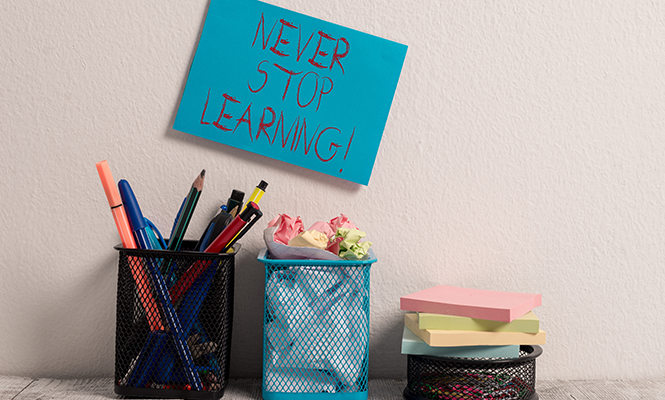Lifelong learning applies to all people across all millennia around the globe. From the beginning, we seek to know our world by processing the information that comes to us through our five senses. This process continues throughout childhood well into adulthood, with contributions from schooling, family and work relationships, our experiences and our innate desire to learn. As the number of our interneuronal connections increase, we begin to formalize thought and the expression of thought. As our experiential content increases, we learn to extrapolate from the familiar to the unfamiliar, applying our knowledge to unsolved problems.
As neurosurgeons, lifelong learning is critical. Regardless of whether we are in academics, private practice, or a hybrid, we start with formal training and education. This supports us as we apply what we have learned, developing, deepening, and refining our fund of knowledge. We observe the outcomes of our actions and adjust accordingly to our way of thought expressed through a change in behavior and implementation.
How many of us can remember attending our first AANS Annual Scientific Meeting as a neurosurgical resident or having the opportunity to present and defend a paper or poster? Participating in the general session audience, listening to presentations of neurosurgical research and discussing future developments within our specialty, inspires excellence in my own mission. These meetings serve to bring us together to discuss all matters neurosurgery, offering something for everyone.
Journal articles and online content from our national organizations serve as a quick and ready reference for review of neurosurgical topics pertinent to my own special interests. It is difficult at best to review every published paper in neurosurgery and other correlative medical fields, but it is possible to peruse the available papers and then focus on those topics that are relevant and critical to my practice.
Finishing my formal training 28 years ago, I am proud of my collection of neurosurgical books. I truly admire the pioneers in our field. When it comes to practical principles, they continue to deliver a wealth of information even applicable today. Reassurance can always be found when I pick up Ernest Sachs’ “Diagnosis and Treatment of Brain Tumors” published in 1931 or Correlative Neurosurgery edited by Richard Schneider, Edgar Kahn, Elizabeth Crosby and James Taren, originally published in 1955.
All of us would agree that we receive information and education from multiple sources. As a community hospital-based neurosurgeon, my first source for lifelong learning are my partners. We frequently discuss patients and their nonsurgical and/or surgical management. Drawing on the experience is invaluable in formulating a plan for some of the more complex neurosurgical patients.
As an example, our monthly morbidity and mortality meetings is an educational process for everyone in our group. This regular meeting fosters a professional community in which we share the joys, successes, trials and tribulations of a large community based neurosurgical practice.
As a neurosurgeon, I am committed to lifelong learning. To offer my patients the best possible care, staying abreast of the latest treatments and approaches to neurosurgical disease, continuous education is necessary.
What I have learned in the past serves as an excellent foundation upon which to expand my knowledge. This fund receives regular contributions from my partners, neurosurgical books, and professional meetings, journals, and online content.








